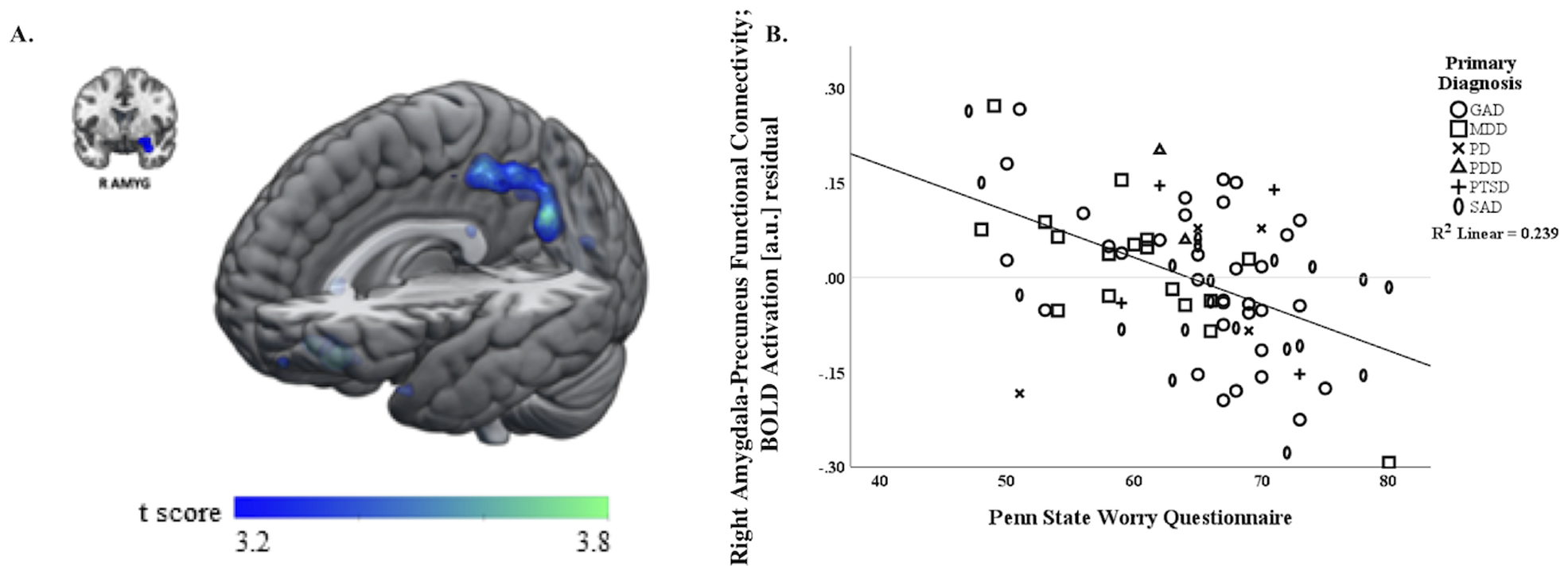Figure 2.

A) Whole-brain analysis of covariance with worry assessed with the Penn State Worry Questionnaire (PSWQ) as the covariate of interest controlling for rumination indexed with the Ruminative Response scale (RRS) and symptom severity assessed with the Hamilton Anxiety Rating Scale (HAMA) and Hamilton Depression Rating scale (HAMD), showing right amygdala-precuneus parameter estimates of functional connectivity on a statistical t-map at p<0.001. B) Scatter plot of the regression analyses depicting extracted parameter estimates of right amygdala-precuneus functional connectivity, controlling for rumination (RRS) and symptom severity (HAMA, HAMD), illustrating more negative connectivity is associated with more worry (higher PSWQ total scores).
Note: circles = principal generalized anxiety disorder, squares = principal major depressive disorder, x’s = principal panic disorder, triangles = principal persistent depressive disorder, crosses = posttraumatic stress disorder, ellipses = principal social anxiety disorder.
